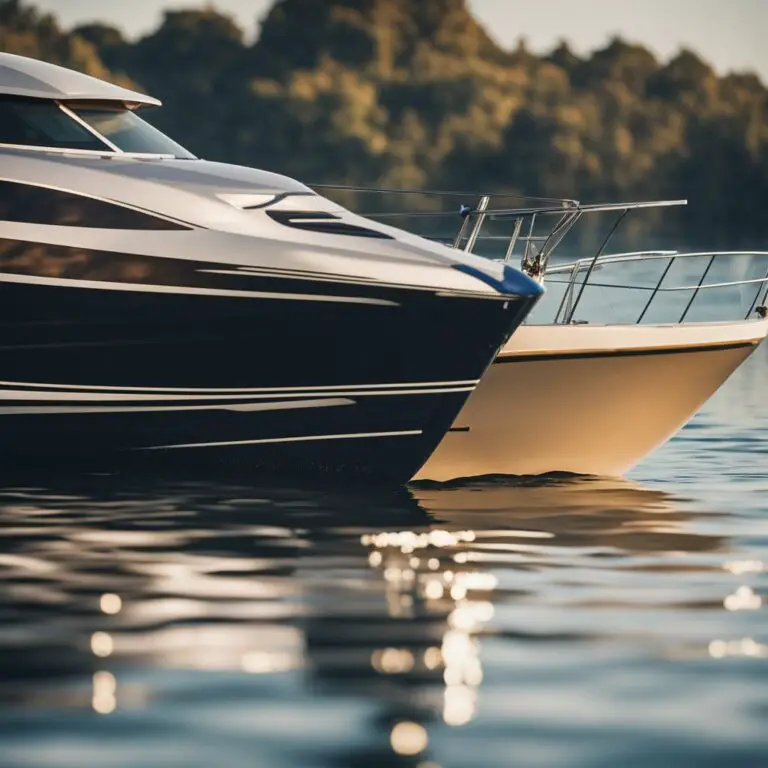Boat design has come a long way since the early days when our ancestors first ventured onto the water. It’s fascinating to think about how ancient civilizations like the Egyptians and Greeks shaped the future of naval architecture with their early boats and sailing vessels.
I’ve noticed that each era’s boats reflect their unique challenges, needs, and technological capabilities.
For instance, the Egyptians, masters of the Nile, were adept at crafting vessels that catered to their religious and cultural life, not just their practical transportation needs.
As for the Chinese, their invention of the stern rudder and watertight compartments was nothing short of revolutionary, changing sailboat design forever and impacting the way we approach maritime safety and maneuverability.
These innovative steps in boat design set in motion a continuous evolution that propelled us into the modern age.
From wooden oars to canvas sails to the advanced materials and technologies found in today’s yachts, it’s clear that human creativity and maritime demands have driven boat design to incredible heights.
I’m excited to dive deeper into this topic, understanding how necessity and ingenuity have intertwined to create the boats that dot our oceans and rivers in the 21st century.
Origins of Watercraft
I’ll be taking you through the earliest known vessels, starting with primitive rafts and canoes, and sailing through the technological advancements that ushered in the era of early sailing vessels.
Ancient Rafts and Canoes
I find the ingenuity of our ancestors fascinating. Imagine seeing them carve out hollowed-out logs to create the first watercraft.
By using either burning techniques or stone tools, they managed to transform a simple tree trunk into a functional boat.
This is not just a creative endeavor; it’s a testament to human innovation in overcoming the challenges posed by water navigation.
Early Sailing Vessels
The advent of sail boats marked a significant leap forward. These vessels can be traced back to thriving civilizations like Egypt, Mesopotamia, and China.
They understood that to expand their horizons, enable exploration, and facilitate trade, they needed to harness the power of the wind.
These early sailing vessels had various forms—an evidence of localized innovations meeting specific navigational needs. The development of sails, including the crab claw sail used by the Austronesian peoples, was particularly crucial for ocean-going voyages and has undoubtedly shaped our maritime history.
Renaissance to Industrial Revolution
In the period between the Renaissance and the Industrial Revolution, I saw significant shifts in boat design driven by exploratory demands and technological innovations in power and materials.
Influence of Global Exploration
During the Renaissance, global exploration took center stage, necessitating vessels that could withstand long voyages and carry more cargo.
I noticed how caravels, with their triangular lateen sails, were particularly favored for their maneuverability and speed.
On the other hand, larger galleons were developed to haul vast treasures, and their design was a direct response to the need for durability, expanded cargo space, and defense capabilities.
Steam Power and Iron Hulls
Steam power revolutionized boat design when the first successful steamship made its appearance in the late 18th century.
Steam engines freed boats from the limitations of wind patterns, and iron hulls, first introduced in the early 19th century, made vessels sturdier and more resistant to the perilous seas.
The combination of steam power and iron hulls culminated in the creation of steamboats, which dominated commercial and military maritime activity, marking the end of sailing ships’ long reign on the high seas.
Modern Advancements
In recent years, I’ve noticed how advanced boat design has become. My focus here is on the rapid progression in motorboats, sailing yachts, and the materials that have revolutionized the industry.
Motorboats and Speed
Motorboats have come a long way with the integration of sophisticated engines and propulsion systems.
Jet engines and outboard motors have become more refined, significantly boosting speed and efficiency.
I’m particularly impressed by the streamlined hull designs which reduce drag, making these modern motorboats not just faster but also more fuel-efficient.
Innovations in Sailing Yachts
What grabs my attention in the realm of sailing yachts are the innovative riggings and hull shapes.
Gone are the days of traditional monohulls for everything – now, catamarans and trimarans are spreading their wings, quite literally, with wide beams and multi-hull configurations.
It strikes me how these designs offer stability and speed, coupled with advanced navigation systems that make sailing more precise and less labor-intensive.
The Rise of High-Tech Materials
I’m seeing a real game-changer with the introduction of high-tech materials in boat construction.
- Carbon fiber: Lightweight and strong, it’s the go-to for high performance.
- Kevlar: Often used in combination with carbon fiber, for an extra layer of durability.
- Graphene: Still emerging, this material promises even greater strength-to-weight ratios.
This shift to composite materials has allowed designers to push the boundaries of what’s possible on the water. It’s not just about strength and weight anymore; these materials also contribute to the sleek aesthetics that have become synonymous with modern boats.
Future Trends and Sustainability
As we look ahead, boat design is increasingly focusing on the environmental impact and the incorporation of advanced technologies.
Eco-Friendly Design
Material Innovation: I’m seeing more boats made with recycled materials and sustainable wood, leaving a lighter ecological footprint.
For example, some newer models use reclaimed plastic or even plant-based resins.
Energy Efficiency: Solar panels and hybrid engines are on the rise, which means boats can reduce fuel consumption. This isn’t just good for the planet; it saves on running costs too.
Autonomous and Smart Boats
Self-Navigation Systems: I’ve noticed that more boats are being equipped with GPS-based autopilot systems, which improve safety and efficiency.
Smart Connectivity: Integration with the Internet of Things (IoT) allows for real-time monitoring of a boat’s condition and environment, leading to better maintenance and operation of these vessels.

